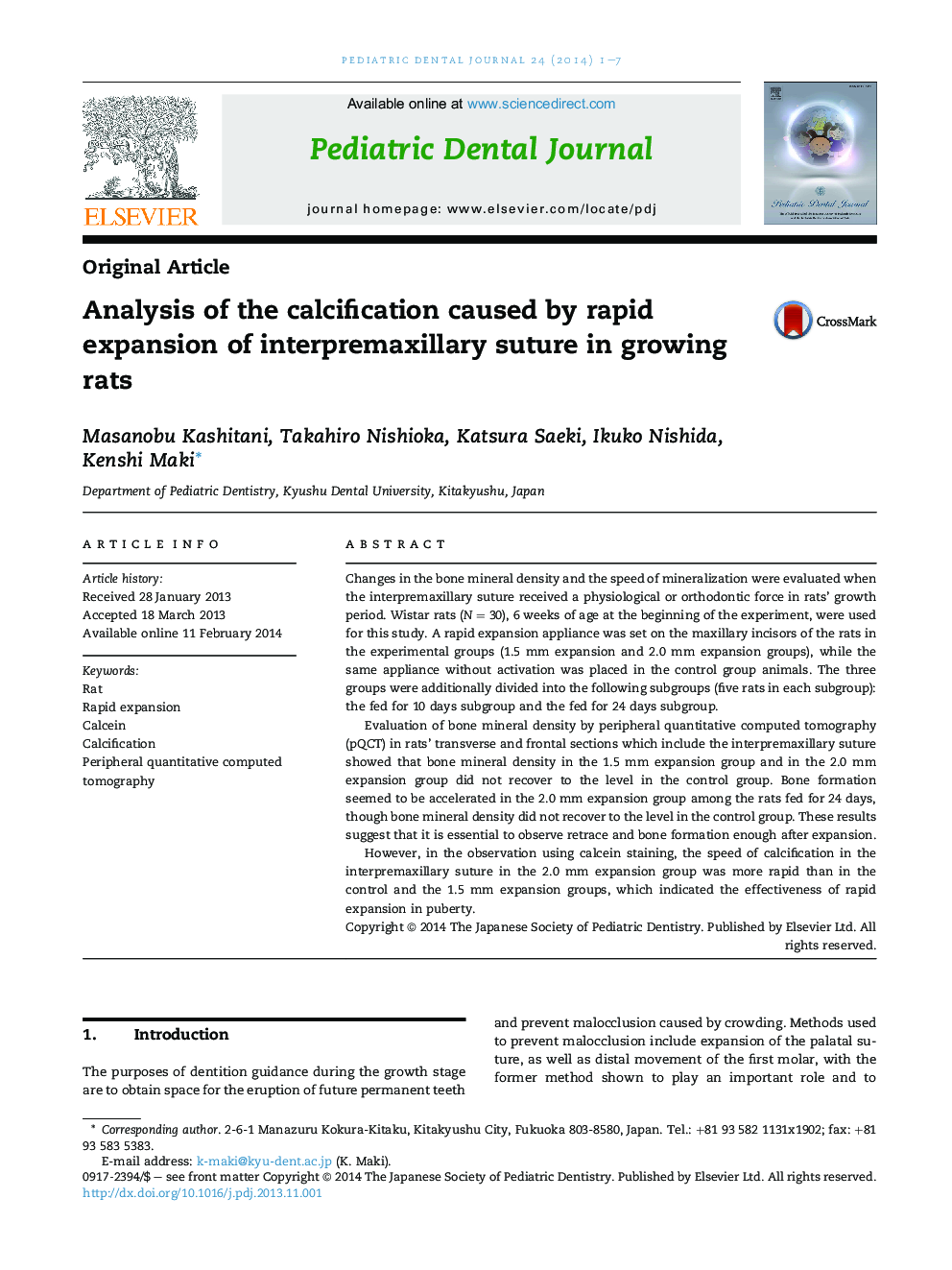| Article ID | Journal | Published Year | Pages | File Type |
|---|---|---|---|---|
| 3171497 | Pediatric Dental Journal | 2014 | 7 Pages |
Changes in the bone mineral density and the speed of mineralization were evaluated when the interpremaxillary suture received a physiological or orthodontic force in rats' growth period. Wistar rats (N = 30), 6 weeks of age at the beginning of the experiment, were used for this study. A rapid expansion appliance was set on the maxillary incisors of the rats in the experimental groups (1.5 mm expansion and 2.0 mm expansion groups), while the same appliance without activation was placed in the control group animals. The three groups were additionally divided into the following subgroups (five rats in each subgroup): the fed for 10 days subgroup and the fed for 24 days subgroup.Evaluation of bone mineral density by peripheral quantitative computed tomography (pQCT) in rats' transverse and frontal sections which include the interpremaxillary suture showed that bone mineral density in the 1.5 mm expansion group and in the 2.0 mm expansion group did not recover to the level in the control group. Bone formation seemed to be accelerated in the 2.0 mm expansion group among the rats fed for 24 days, though bone mineral density did not recover to the level in the control group. These results suggest that it is essential to observe retrace and bone formation enough after expansion.However, in the observation using calcein staining, the speed of calcification in the interpremaxillary suture in the 2.0 mm expansion group was more rapid than in the control and the 1.5 mm expansion groups, which indicated the effectiveness of rapid expansion in puberty.
